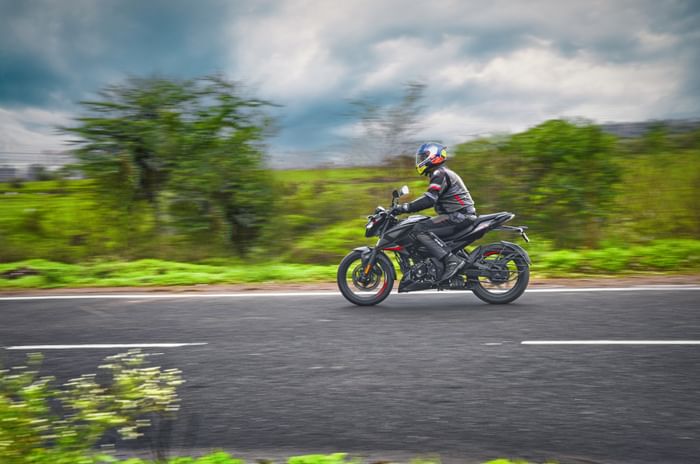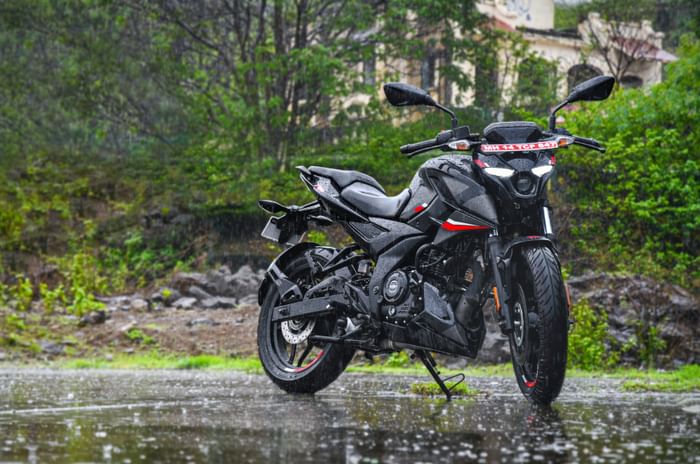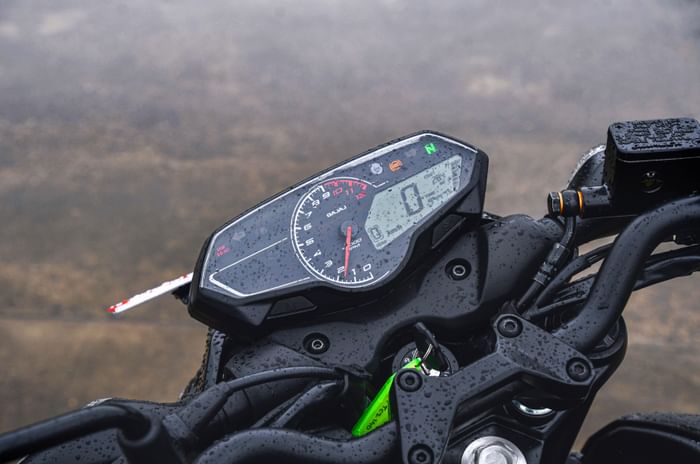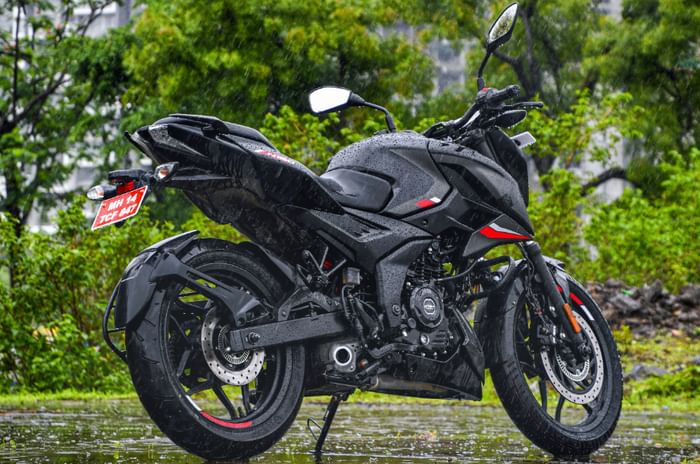It is always interesting to see what motorcycle manufacturers can do with brand new platforms. The Bajaj Pulsar N250 and F250, built completely from the ground up, ushered in a new era for the popular Pulsar brand. As was expected, Bajaj has followed those bikes up with another motorcycle, albeit with a different engine.
The Bajaj Pulsar N160 is, essentially, the Pulsar N250 with a smaller displacement engine, a 164.82cc, air- and oil-cooled single, to be precise. And it is Bajaj's prime contender in the fiercely competitive 160cc segment. Does it have what it takes to not just survive, but thrive?
Bajaj Pulsar N160: engine
First things first, let us tell you that we are riding the top-spec, dual-channel ABS-equipped Pulsar N160. It is available in this exclusive Brooklyn Black colour and gets the Pulsar 250's 37mm telescopic fork. The lower, single-channel ABS equipped variant is available in three colour options and has a smaller 280mm front disc and much thinner, 31mm diameter fork. Those are quite significant differences and they dilute the appeal of the base model quite significantly.

The Pulsar N160's engine has nothing to do with the existing Pulsar NS160's mill. This engine, in fact, has been under development around the same time as the Pulsar 250's engine. It has a long-stroke configuration, with a simple two-valve head and makes 16hp and 14.7Nm of peak torque. These figures aren't class leading, although it is quite close to the motorcycles at the top of the segment. Only the RTR 160 4V and the NS160 outdo the N160 in claimed engine output figures. However, there is also the fact that at 154kg, N160 is the heaviest bike in the segment. You would imagine that with a power to weight ratio of 103.89hp/tonne, compared with the RTR’s 119.86hp/tonne, the Pulsar N160 is already on the back foot. But that's only on paper.
In the real world, the engine is delightfully smooth, packs oodles of torque and has decent top end performance as well. The low and midrange between 4,000 to 7,000rpm, especially, is astonishingly good. You can be as lazy as a sloth, slot the gearbox in 5th and ride at 30-35kph in the city without any signs of protest from the engine. Roll on the throttle from this point and the bike pulls cleanly, albeit at a slow pace. However, if you need to pull a quick overtake you will have to go down a gear or two. Not that you'll mind this because the gearbox is smooth and the light clutch lever action will also make it a breeze to go up and down the cogs.
All said, the engine's superb tractability will make it natural for those graduating from 125cc-150cc motorcycles to feel at home with the N160.
Top-end performance isn't lacking either and the bike can hold a steady 80-90kph without feeling or sounding strained. Sitting at 100kph, too, doesn't cause the engine to sweat. From then on, however, the performance begins to taper as the digital speedo climbs to an indicated top speed of around 120kph. At this point, the revs are also pretty close to the redline, which again is an indicator of the engine reaching its performance ceiling.
Overall, the N160's engine is the star of the show here and I'm also a fan of its throaty exhaust note.
Bajaj Pulsar N160: ride and handling
The advantage of platform sharing is clearly evident in the way the N160 rides and handles. It has the same frame, suspension, wheels and brakes as on the Pulsar N250. So, it isn't surprising to see that the N160 is blessed with high-speed stability and sure-footedness around a corner.

The ride quality is quite good but not as plush as the N250, despite the suspension being exactly the same, down to the spring rates. The mild but clear firmness in the ride is felt at the rear, particularly while riding over the sharp edge of a pothole. Mind you, we didn't tinker with the stock preload settings; plus, the N160 is about 8kg lighter than the N250. We think the ride quality should improve once the preload has been suitably adjusted and when a pillion hops on-board.
As for the brakes, the Grimecas are my new favourites in this segment as they offer strong bite and progression with more than enough feedback through the lever.
Bajaj Pulsar N160: design and features
As is the case with the chassis, the N160's bodywork is identical to the N250's and that's definitely not a bad thing at all. Bits like the headlight cowl, the sculpted fuel tank and its extensions or the way the side and tail section merge are design highlights. Then there's the floating panel on the front mudguard, the frost effect inside the LED tail-light on the black chrome 3D Pulsar logo that showcases Bajaj's attention to detail. The cherry on top is the exclusive colourway that this variant wears, making it that much more attractive.

The overall quality and finish levels are largely good, but I wish Bajaj would pay more attention to touchpoints in a couple of places. The switchgear, for instance, is just about okay, but the handlebar grips look shiny and cheap.

As for the other equipment, the bezel free, analogue-digital instrument cluster is identical to the N250's, with useful information like distance to empty being shown. That being said, the lack of Bluetooth connectivity or navigation – while not being a dealbreaker right now – should be considered by Bajaj during the next round of updates.
Bajaj Pulsar N160: conclusion
Bajaj has set out to take on the 160cc segment again with all guns blazing and after this first encounter with the Pulsar N160, we can say that they've come up with something interesting and impressive.
I'd go as far as saying that the Pulsar N160 had been built with the intent of particularly targeting the current best 160cc motorcycle, the TVS Apache RTR 160 4V. So much so that even their prices fall in the same bracket. Which of these is the better motorcycle is a comparison test we can't wait to conduct.

For now, if you are considering getting the N160, we'd recommend looking past the Bajaj single channel ABS variant and stretch your budget by Rs 5,000 to Rs 1.27 lakh for the dual-channel ABS-equipped Pulsar N160. It is the one to put your money on.















































